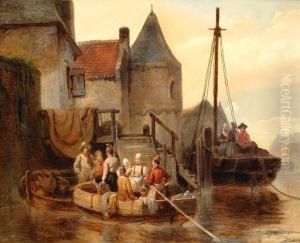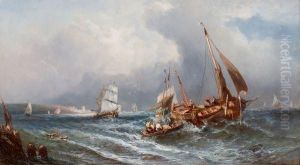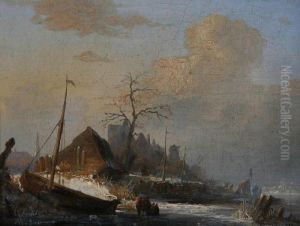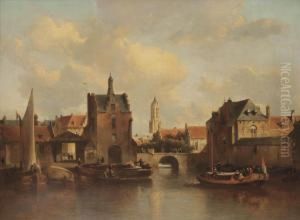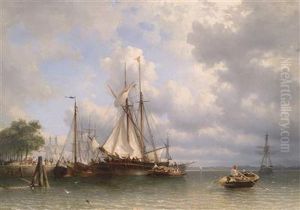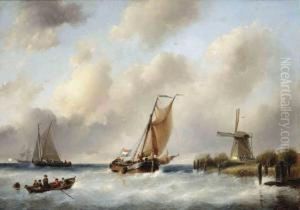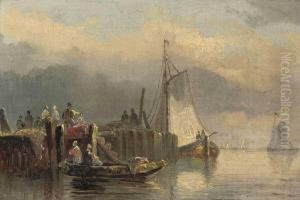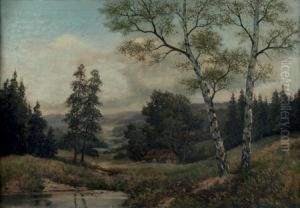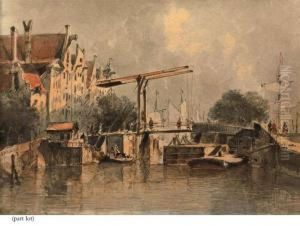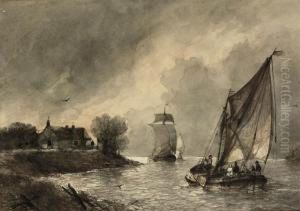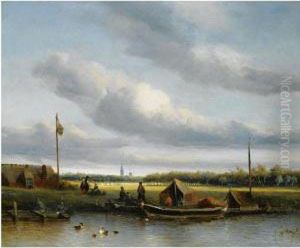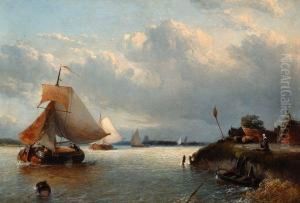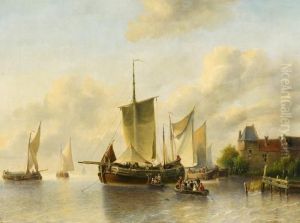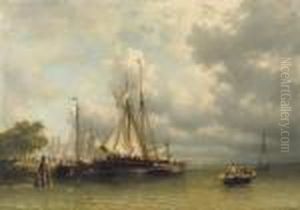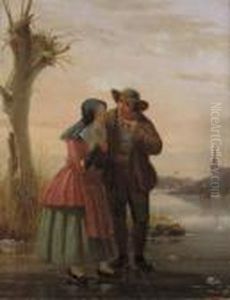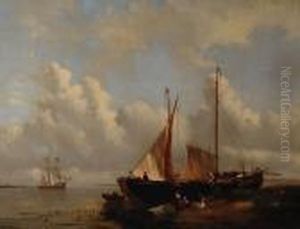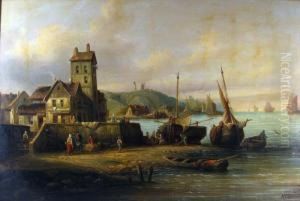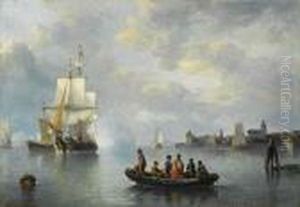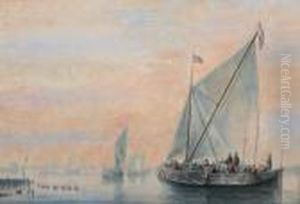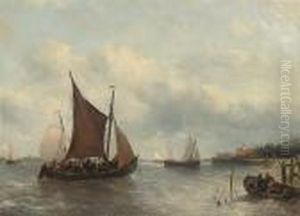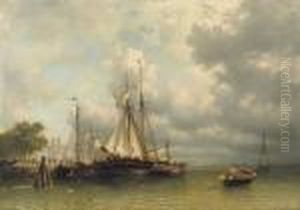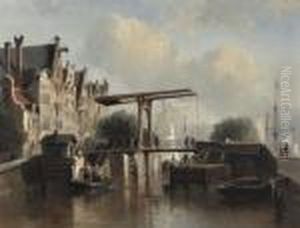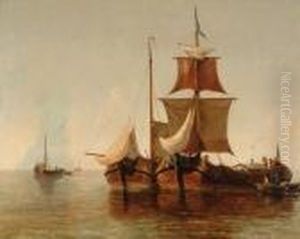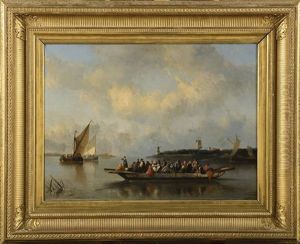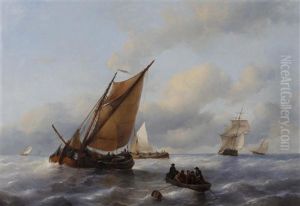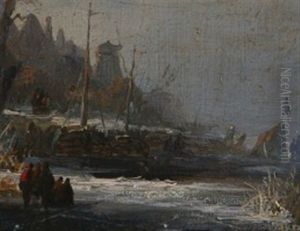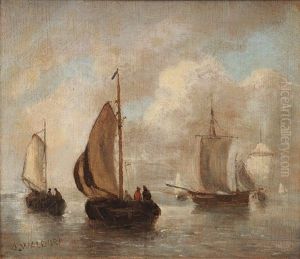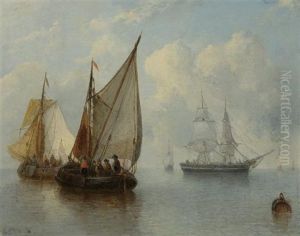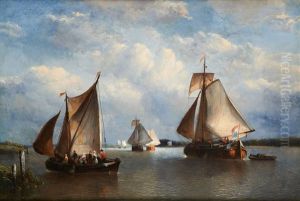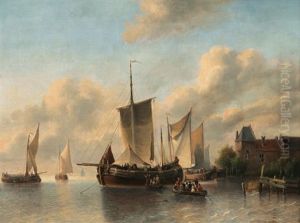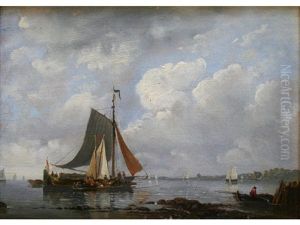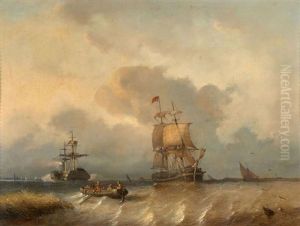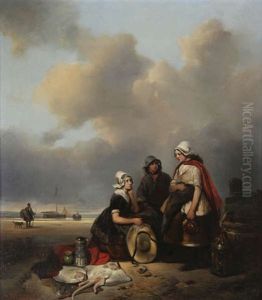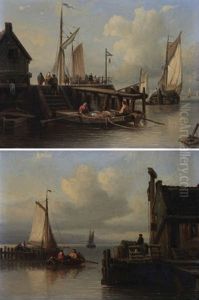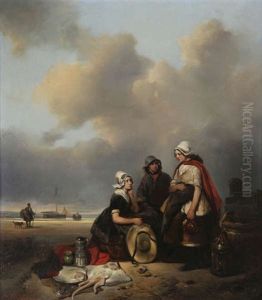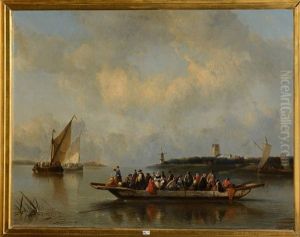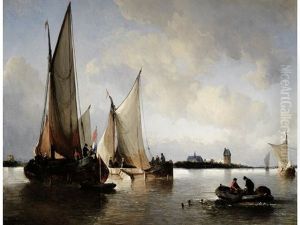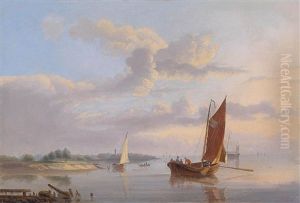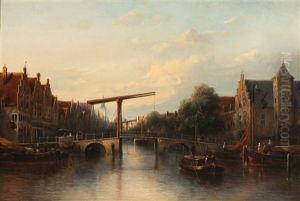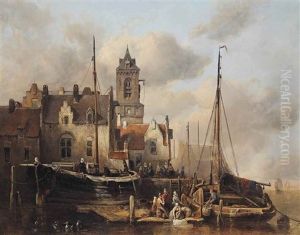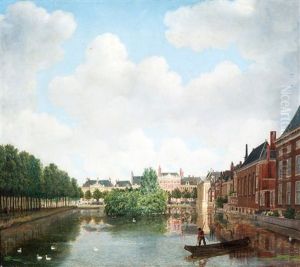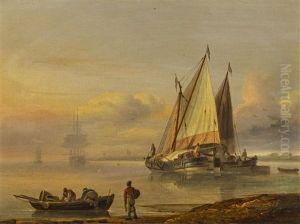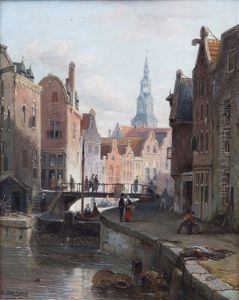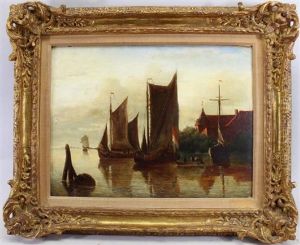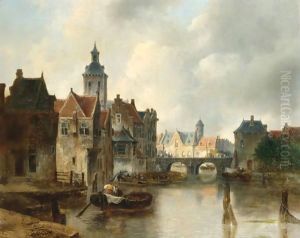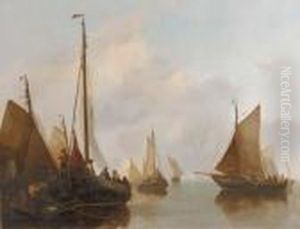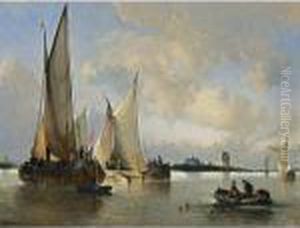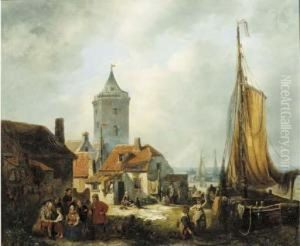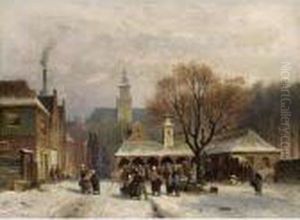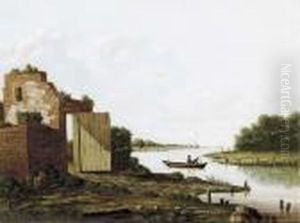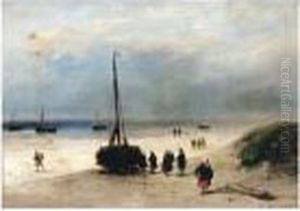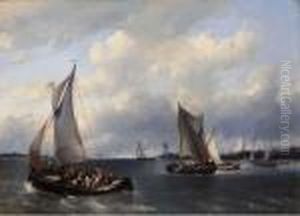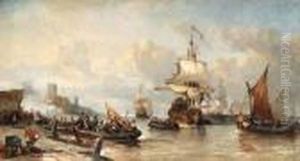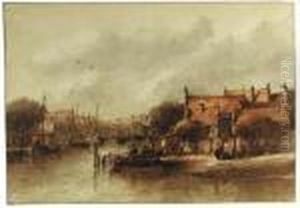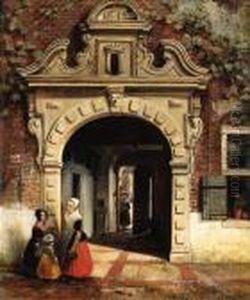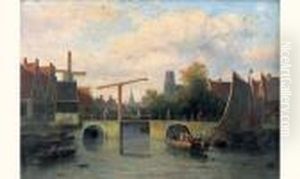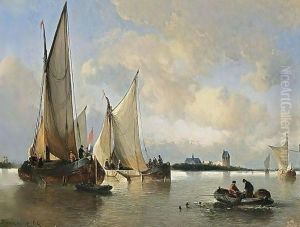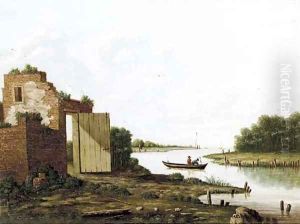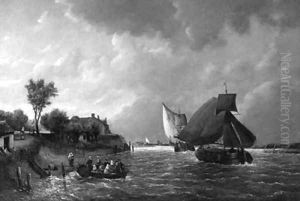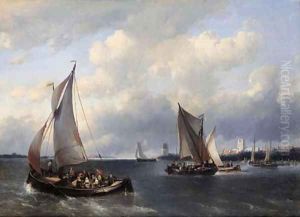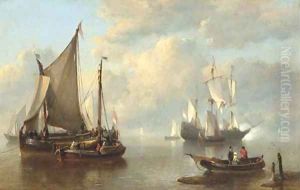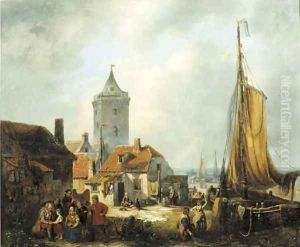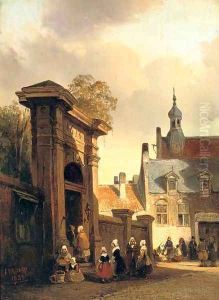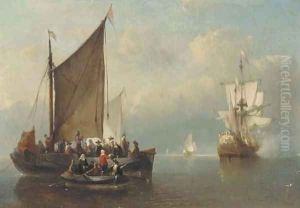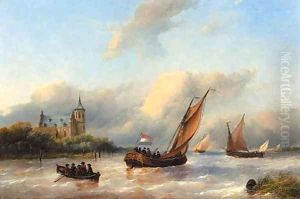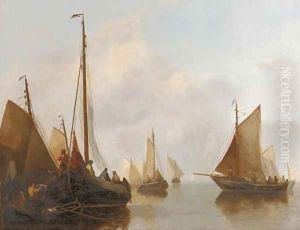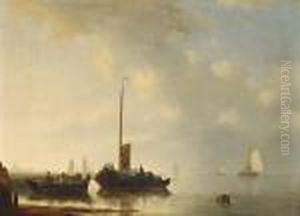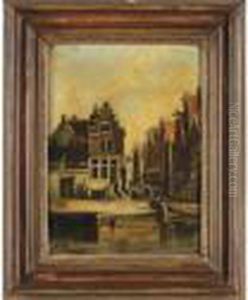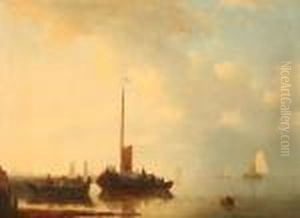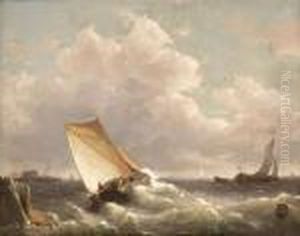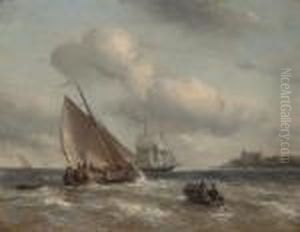Antonie Waldorp Paintings
Antonie Waldorp, also known as Anthonie Waldorp or Antoine Waldorp, was a Dutch painter and stage designer known for his depictions of landscapes and cityscapes. Born on March 17, 1803, in Amsterdam, Netherlands, Waldorp started his artistic journey at a young age. Initially, he worked under the guidance of his uncle, the artist Pieter Gerardus van Os, who was a notable figure in Dutch art, specializing in animals and landscapes.
Waldorp's early career was marked by his efforts in stage design, which he pursued alongside his painting. His work in the theater influenced his artistic style, particularly in his use of lighting and composition, which often mirrored the dramatic effects seen on stage. Despite the promise shown in his stage work, Waldorp eventually shifted his focus entirely to painting, finding that it was where his true passion lay.
As a painter, Waldorp developed a reputation for his picturesque landscapes and cityscapes, which often featured waterways, vessels, and figures going about their daily lives. His scenes were not just simple representations; they conveyed a sense of mood and atmosphere that resonated with the Romantic sensibilities of the time. He was especially adept at capturing the interplay of light and shadow, a skill that no doubt benefitted from his experience with stage lighting.
Throughout his career, Waldorp was an active member of the Amsterdam art community. He was associated with the 'Koninklijke Academie' in Amsterdam, where he contributed to the development of the Dutch art scene. His works were exhibited widely and gained him considerable acclaim.
Despite the recognition he received during his lifetime, Waldorp's work was, for a time, somewhat forgotten after his death on October 28, 1866. However, interest in his art saw a revival in later years as art historians and collectors began to appreciate the unique qualities of his landscapes and the role he played in 19th-century Dutch art.
Today, Antonie Waldorp is remembered as an important figure in the Dutch Romantic movement, and his works can be found in various art collections, museums, and galleries around the world. They continue to be appreciated for their contribution to the Dutch landscape genre and for their historical value, offering insights into the Netherlands' past urban and rural environments.
